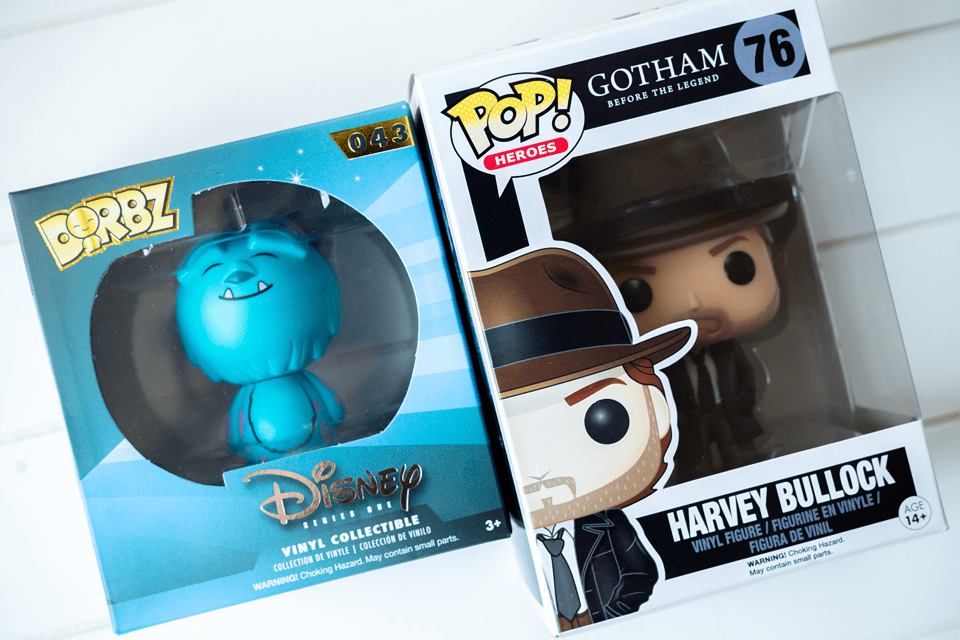

^ a b c "History of the Jack-in-the-Box Toy".^ a b "Jack in the box, a classic and vintage toy"." 'Jack in the box' - the meaning and origin of this phrase". ^ a b "Jack-in-the-Box | National Toy Hall of Fame".^ Sobey, Ed Sobey, Woody (2008), The Way Toys Work: The Science Behind the Magic 8 Ball, Etch a Sketch, Boomerang, and More, Chicago Review Press, p. 71, ISBN 978-1613743096.
#POP IN A BIX SERIES#
The comic book series Astro City, written by Kurt Busiek and illustrated by Alex Ross, features a wisecracking vigilante named "Jack-In-The-Box", who relies on toy-themed gadgets while using the typical clown motif.


#POP IN A BIX FREE#
Finally, he hammers the box with a mallet only for Jack in the box to break through the floor, Donald struggles to pull it out but ends up trapped in the box, wrestling with it until he gets free but switches clothes with Jack in the box stealing his shirt and hat while Donald is wearing Jack's hat and his accordion clown costume. He makes many failed attempts to close it, and it slides Donald across the table, hitting Donald's head into his pie piece. The American fast food company Jack in the Box began using the toy and the phrase as their mascot in the early 1950s.Ī 1945 Disney cartoon called The Clock Watcher shows Donald Duck playing with a Jack-in-the-box. The jack-in-the-box has been used for centuries by cartoonists as a way to describe and poke fun at politicians. Since then, Fisher Price, Chad Valley, Mattel and Tomy have all played a major role in distributing the jack-in-the-box. The company is located in Italy as well as the Netherlands. Starting in 1935 and continuing for 20 years, the first company to take on the distribution of the toy was a very small firm named Joy Toy. Over the years, the jack-in-the-box has evolved into characters other than the clown, such as Winnie the Pooh, the Cat in the Hat, the Three Little Pigs, kittens, dogs, Curious George, Santa Claus, giraffe, and so on. Additionally, the tin boxes began to be covered in images from children's nursery rhymes with corresponding tunes.

Around the 1930s, the jack-in-the-box became a wind-up toy made from tin. Originally, the jack-in-the-box was made out of wood, but with new technology the toy could be constructed from printed cardboard. In the early 18th century, improved toy mechanisms made the jack-in-the-box more widely available for all children and not just royalty. After seeing this toy, other nobles requested their own "Devils-in-a-box" for their children. It was built as a gift for a local prince's fifth birthday. Claus built a wooden box, with metal edges and a handle that would pop out an animated devil or “Jack” after cranking the handle. In the early 1500s, the first jack-in-the-box was made by a German clockmaker known as Claus. There he used the term as an insult to describe a swindler who would cheat tradesmen by selling them empty boxes instead of what they actually purchased. The phrase jack-in-the-box was first seen used in literature by John Foxe, in his book Actes and Monuments., first published in 1563. In French, a jack-in-the-box is called a " diable en boîte" (literally "devil in a box"). According to folklore, he once cast the devil into a boot to protect the village of North Marston in Buckinghamshire. A theory as to the origin of the jack-in-the-box is that it comes from the 14th-century English prelate Sir John Schorne, who is often pictured holding a boot with a devil in it.


 0 kommentar(er)
0 kommentar(er)
